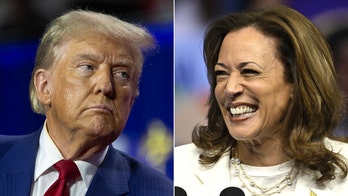Vice President Kamala Harris and former President Donald Trump have vastly different economic plans, ranging from tax cuts to social programs. This article delves into the key differences between their proposals and their potential impact on the U.S. economy.
Vice President Kamala Harris and former President Donald Trump have emerged as the frontrunners in the race for the 2024 presidential election, with their economic plans taking center stage in the political discourse. Their proposals present contrasting visions for the country's economic trajectory, encompassing a wide range of policies from tax cuts to social programs.
* Harris advocates raising taxes on corporations and wealthy individuals, arguing that the revenue generated can be invested in public services and infrastructure.

Kamala Harris and Donald Trump's Economic Plans: A Comparative Analysis
* Trump, on the other hand, proposes further tax cuts, particularly for businesses and high-income earners, claiming that it will stimulate economic growth and job creation.
* Harris proposes investing heavily in infrastructure projects, such as roads, bridges, and renewable energy, to create jobs and modernize the country's infrastructure.

Kamala Harris and Donald Trump's Economic Plans: A Comparative Analysis
* Trump has emphasized infrastructure development, but his plans focus on public-private partnerships and deregulation rather than direct federal spending.
* Harris supports expanding access to affordable healthcare, including through Medicare-for-All, a single-payer system that would provide comprehensive coverage for all Americans.

Kamala Harris and Donald Trump's Economic Plans: A Comparative Analysis
* Trump advocates repealing and replacing the Affordable Care Act, known as Obamacare, with a more market-oriented approach, reducing government involvement and emphasizing consumer choice.
* Harris proposes making college more affordable by forgiving student loan debt, increasing Pell Grants, and investing in Historically Black Colleges and Universities (HBCUs).

Kamala Harris and Donald Trump's Economic Plans: A Comparative Analysis
* Trump has not released a comprehensive education plan, but he has supported school choice and vouchers for private schools.
* Harris advocates expanding social safety net programs, such as Social Security, Medicaid, and food assistance, to provide a financial cushion for the vulnerable.
* Trump has proposed cuts to social programs, arguing that they are too expensive and create dependency.
* Harris recognizes climate change as an urgent threat, proposing investments in renewable energy, clean technology, and environmental protection measures.
* Trump has downplayed the severity of climate change, questioning scientific consensus and opposing environmental regulations.
* Harris supports policies that promote fair wages, unionization, and job training programs to strengthen the American workforce.
* Trump has advocated for deregulation of labor markets, reducing union influence, and prioritizing business interests.
* Harris favors a more nuanced approach to trade, balancing free trade with protections for American workers and industries.
* Trump has pursued a more protectionist stance, imposing tariffs and withdrawing from trade agreements.
* Harris attributes inflation to corporate greed and supply chain disruptions, proposing measures to curb price hikes and address root causes.
* Trump blames inflation on Federal Reserve policy and government spending, advocating for tighter monetary policy and reduced federal intervention.
The economic plans of Kamala Harris and Donald Trump represent fundamentally different visions for the country's economic future. Their proposals will have a profound impact on American households, businesses, and the overall U.S. economy. As the 2024 election approaches, voters must carefully consider the implications of these plans and make informed decisions about which economic path they believe best serves the nation's interests.










